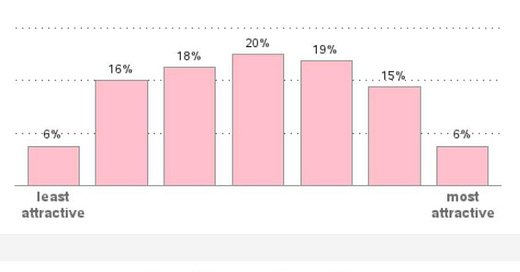The tacit assumption of signaling models of education is that employers engage in statistical discrimination. Instead of looking into each applicant’s soul and finding his true marginal productivity, employers rely heavily on more-or-less accurate stereotypes about “high school drop-outs,” “English majors from Harvard,” “community college graduates,” etc. As long as the stereotype leads to profitable hiring decisions, there’s not much reason for employers to wonder, “Are Harvard grads more productive because Harvard taught them job skills, or because people who graduate from Harvard were highly productive all along?”
The real-world importance of statistical discrimination is hard to dispute. Even people like me who think that markets thwart most taste-based discrimination usually admit that statistical discrimination is much more resilient to market pressure. Indeed, as I explain to my labor students:
Unlike taste-based discrimination, statistical discrimination can survive and thrive in markets. If group differences are real, and it is costly to judge case-by-case, then people who don’t discriminate lose money.
If the typical economist read my notes on discrimination, his main complaint would be that markets do less to undermine discrimination than I imagine. Why then are most economists so quick to dismiss the signaling model of education as “implausible”? If you can believe that employers conserve on information costs by using their stereotypes about race and gender, why can’t you believe that employers conserve on information costs by using their stereotypes about education?
The post appeared first on Econlib.

















Another factor in employment is managers gaining armour to defend a potentially bad outcome by opting for the recognised standard. If you hire someone with a degree and they turn out badly, anyone looking at your actions can see someone who did their job.
Something you notice about smaller companies is that they are much less concerned about degrees. I've worked in companies that hired programmers who had been working on open source projects, or someone still at school who had built an app in his summer holiday.
This also fits into another aspect, that with the increase in degrees, the incentives for universities to get students, a lot of degrees aren't particularly good. And when the reliability of the recognised standard slips, or there are better standards, the first people to adopt it are always smaller businesses.
When you say education is mostly signaling, you mean as you get farther in education signaling dominates other things. This is true, but it's not convincing because not everyone realizes what you are saying. Unless you go to a fancy manhattan kindergarten signaling is not important that stage. Learning is important during the early years as well.
The way to make it convincing is to make it more obvious. You are not saying this stuff is wrong. Make a graph in which the time starts at day care year 1, and ends at grad school. On the graph show the jobs that school does it should always add up to 100%. The jobs are 1) child care 2) Learning skills/facts 3) Signaling. You could add a 4th factor like demonstrating and practicing conformity, which I don't think is a negative. One needs practice doing boring things.
In this chart, Watch my kids dominates the early years, obviously. Then Learning peaks 1-4th grade, Watch my kids goes to Zero at some-point. Signaling starts to show at second half of high-school, dominating all other factors by the end of the chart.
I think this is a simplification, but then you can ask people how they would draw this chart, and what factors they would include and how much would they give them.
I find this is